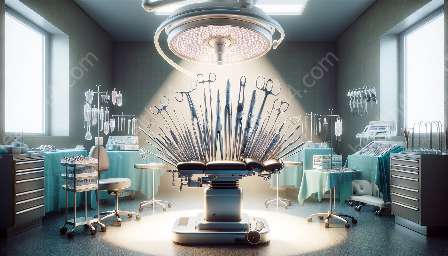Nebulizers are essential medical devices that transform liquid medication into a fine mist, making it easier to inhale. They play a crucial role in respiratory treatments, and their diverse types cater to the specific needs of patients. When exploring the realm of surgical instruments and medical devices & equipment, it becomes evident that nebulizers are integral components in providing comprehensive healthcare solutions.
Function of Nebulizers
Nebulizers are designed to administer medications directly into the lungs through inhalation. The device converts liquid medication into a fine mist, which can be inhaled by the patient using a mouthpiece or mask. This method of delivery ensures that the medication reaches the respiratory system efficiently, making it an ideal solution for patients with respiratory conditions such as asthma, chronic obstructive pulmonary disease (COPD), and cystic fibrosis.
Types of Nebulizers
There are various types of nebulizers available, each serving distinct purposes. Jet nebulizers, ultrasonic nebulizers, and mesh nebulizers are among the commonly used types. Jet nebulizers utilize compressed air to aerosolize the medication, whereas ultrasonic nebulizers rely on high-frequency vibrations to produce the fine mist. Mesh nebulizers, on the other hand, utilize a mesh to create aerosols and are known for their portability and efficiency. Each type has its unique set of benefits and is chosen based on the patient's condition and treatment requirements.
Benefits of Nebulizers
Nebulizers offer several advantages, making them a preferred choice for respiratory treatments. These benefits include precise dose delivery, ease of use, and effectiveness in delivering medication to the respiratory system. Additionally, nebulizers are suitable for patients of all ages, from infants to the elderly, making them versatile and widely applicable across different demographics.
Integration with Surgical Instruments
When considering the synergy between nebulizers and surgical instruments, it is evident that both play critical roles in healthcare settings. Surgical instruments are essential for conducting various medical procedures, including those related to respiratory conditions. Nebulizers complement these procedures by providing efficient delivery of post-operative respiratory medications, thereby contributing to successful patient recovery and improved outcomes.
Interconnectivity with Medical Devices & Equipment
Nebulizers are intricately connected with a wide range of medical devices and equipment. They are often integrated with respiratory care equipment, such as oxygen delivery systems and suction devices, to ensure comprehensive respiratory care for patients. Moreover, nebulizers are compatible with monitoring devices that track respiratory function, enabling healthcare professionals to assess the effectiveness of the treatment and make informed decisions regarding patient care.
Conclusion
Nebulizers play a pivotal role in respiratory care, offering a reliable and effective method for delivering medications to patients with various respiratory conditions. Their integration with surgical instruments and interconnectivity with medical devices & equipment underscore their significance in providing holistic healthcare solutions. Understanding the function, types, and benefits of nebulizers is essential for healthcare professionals and patients alike, as it enables informed decision-making and fosters improved respiratory care outcomes.


